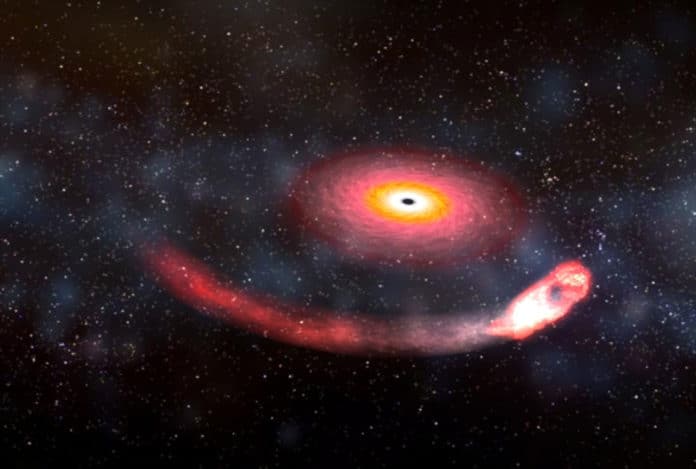Astrophysicists at the University of Amsterdam contemplated the gravitational waves created by the merger of a neutron star and a black hole. They found that these waves are slightly altered if a specific sort of dark matter is present.
The study shows that merger events of black holes and neutron stars, combined with radio telescope observations, may indicate the presence of one of the most well-motivated dark matter candidates: the so-called ‘QCD axion.’
If such axions exist near to the black hole surface when it converges with a neutron star, the gravitational waves transmitted will be modified in an unobtrusive yet particular manner. This allows an immediate estimation of the axions’ density.
Characteristic signal
The axions will, at the same time, be changed over into radio waves by the strong magnetic fields of the neutron star. This likewise yields a characteristic radio wave signal. Together the radio and gravitational-wave signals, whenever recognized, would comprise detection of QCD axion dark matter.
The study was conducted in collaboration with astrophysicists Thomas Edwards, Marco Chianese, and Bradley Kavanagh, from the groups of Samaya Nissanke and Christoph Weniger at the GRAPPA center of excellence.
Journal Reference:
- Unique Multimessenger Signal of QCD Axion Dark Matter. DOI: 10.1103/PhysRevLett.124.161101
